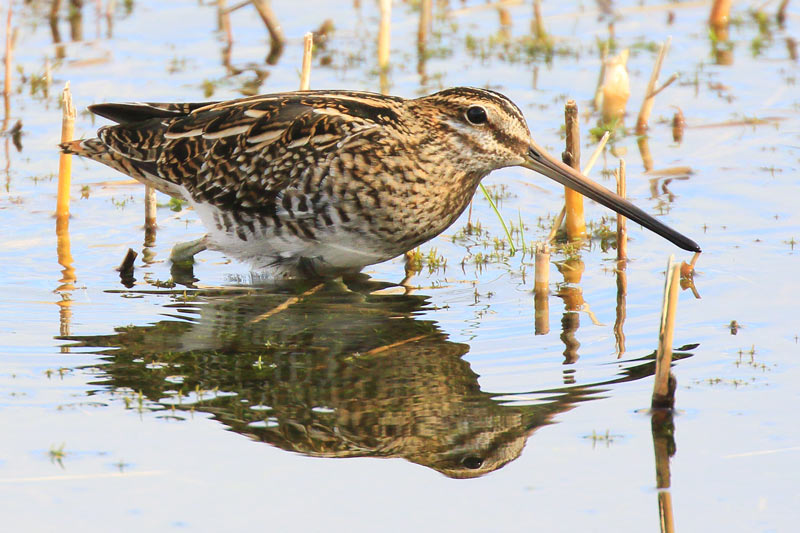Twelve new projects receive £16 million to restore thousands of hectares of peatlands across England.
Thousands of hectares of peatlands – from the Great North Bog to the Norfolk Broads – are set to be restored with twelve new projects awarded funding to help tackle climate change and recover biodiversity.
The Government is investing over £50 million in peat restoration, building on its pledge to restore approximately 35,000 hectares of peatland in England by the end of this Parliament, and leave the environment in a better state for future generations.
Peatlands are an iconic feature of England’s landscape – often referred to as “our national rainforest”. They contain over half of the country’s terrestrial carbon stores and provide a haven for wildlife, as well as supporting better water quality and natural flood management.
However, 87% of England’s peatlands, including lowland peatlands are degraded, damaged and dried out, emitting tonnes of carbon dioxide each year. The funding from government will help restore these environments, in turn helping protect wildlife and restore their critical ability to manage water quality and reduce the risk of flooding.
Common Snipe, copyright Glyn Sellors, from the surfbirds galleries
The projects being awarded funding stretch from Somerset to County Durham and will see iconic peatland habitat, such as the Great North Bog, Dorset Heaths and the Lincolnshire Fens restored.
Environment Minister Rebecca Pow said: Our peatlands hold over half of our terrestrial store of carbon, but with just 1% in a near natural state and soils drying out we must take urgent action to prevent further carbon from being emitted into the atmosphere. Backed by over £16 million of government funding these new landscape-scale projects will drive collaboration and supercharge peatland restoration across the country to tackle climate change and fight biodiversity loss.
Tony Juniper, Chair of Natural England said: Peatlands bring multiple benefits for society and the economy. They are huge carbon stores and also massive water filters that enable rivers to run clear. They comprise vital natural flood defences because of how they store water and on top of that support, they support many iconic wildlife species such as the Curlew. Wild peatlands also contribute to public health and wellbeing through providing wonderful opportunities for outdoor recreation. Restoring peatland landscapes to a healthy ecological state will ensure these benefits are protected, enhanced and handed on to future generations. I’m delighted these grants will bring more peatlands into the Nature Recovery Network that is so important for delivering our ambition for improving the natural environment in England.
The Government has also recently launched the new £2 million Lowland Agricultural Peat Water Discovery Pilot, to be managed by the Environment Agency, which supports government’s Net Zero and sustainable farming ambitions. Many of our lowland peatlands have historically been drained of water to create drier soils suitable for agricultural use and food production.
The Pilot will fund investigations into more sustainable management of lowland agricultural peat, facilitating local collaboration and enabling the creation of costed water management plans for lowland peat areas in England. Successful projects will drive advancements in our understanding of the lowland peat water challenge to transform the way we use water in England’s lowland regions.
Philip Duffy, Chief Executive of the Environment Agency, said: Peat and peat soils are a great national asset, and better management can achieve so much to tackle climate change, boost biodiversity and support sustainable agriculture.
Our discovery pilot is the chance for farmers and land managers to understand how changing the water levels in their lowland peat soils could create new opportunities for long-term sustainable agriculture. I urge anyone working with lowland peat who is interested to get in touch and apply.
In June, the Government announced a package of measures and investment to reduce carbon emissions across lowland peat and a commitment to take forward action on the 14 recommendations for sustainable peatland management as put forward by Robert Caudwell, Chair of the Lowland Agricultural Peat Task Force.
The measures the Government is taking will also improve resilience to drought and safeguard productive farming on some of our most valuable agricultural land, supporting our rural economy and food producers.
Restoration grants:
Full list of projects:
- Norfolk – The Buttle Marshes Restoration project led by the Broads Authority will restore 26 hectares of peatland which has been historically drained for arable cultivation.
- Dorset – The Dorset Peat Partnership will restore 170 hectares of mire and fen habitat under restoration across 16 sites within the Dorset Heaths. The sites are popular with walkers, families and community groups and the project will use engagement opportunities to promote sustainable recreation and conservation.
- Durham – This project led by Durham County Council and the North Pennines AONB (Areas of Outstanding Natural Beauty) partnership will extend previous restoration and discovery projects supporting the Great North Bog. Restoration is now planned across an additional 1,127 hectares of degraded blanket bog to support biodiversity in Yorkshire and the North Pennines. The project will also engage sources of private finance to support the long-term success of peatland restoration in the area.
- Somerset – This project will support the restoration and rewetting of 35 hectares of lowland fen peat at RSPB’s Greylake Reserve, building on findings from the Somerset Peat Partnership-led discovery grant. This project will join an adjacent paludiculture fund trial, creating a mosaic of functioning peatland habitat within the Somerset Wetland ‘super’ National Nature Reserve, which supports rare plants such as the Round-leaved Sundew.
- North Yorkshire – The ‘Moor to Restore’ project create partnerships in the local area and will see over 1,100 hectares of upland bog restored in the North York Moors National Park.
- Peak District – The Peak District National Authority will work with the Moors for the Future partnership restoring peatlands across three sites in the Peak District National Park. The partnership will engage volunteers who will plant species such as sphagnum moss to improve water quality, and community groups will also learn about moorland fire prevention.
- Peak District – based at Park Hall and Kinder Scout, this project will see the National Trust, funded in part by private finance from United Utilities, restore over 420 hectares of degraded blanket bog.
- Lincolnshire – The Fens East Peat Partnership will restore over 1,300 hectares of peatland in the Fens East, which includes agricultural peatlands and landscapes already being restored. The partnership will share knowledge and expertise with practitioners facing similar challenges across peatland landscapes.
- Lincolnshire – Project in the Humberhead Levels area will see the Lincolnshire Wildlife Trust restore relic raised bogs which have historically been drained for agriculture or for fuel. Restoration activities will see action to control scrub and improve water level management to improve the landscape. Community events and training days will also be delivered to engage local landowners in peat restoration.
- Lancashire – The Red Rose Project will restore over 400 hectares of degraded lowland and upland peatlands within the Lancashire area, building on the Peatland Discovery Grants which enabled restoration plans to be developed as a baseline for data collection and landowner engagement.
- Lancashire – The Holcombe Moor project will restore 135 hectares of peatland using innovative techniques to raise the water levels on blanket bog which has degraded due to industrial pollution, overgrazing and wildfire. The location of the site near to the industrial heartlands of Greater Manchester and Lancashire will provide opportunities for local people to take part in guided walks and connect with nature on their doorsteps.
- Cumbria – Partnership between the National Trust, Cumbria Wildlife Trust and the Forest of Bowland Area of Outstanding Natural Beauty will restore over 1370 hectares of peatlands across the uplands of Cumbria and the Forest of Bowland.
Nature for Climate Peatland grant scheme:
- For more information on the Nature for Climate Peatland Grant scheme please visit: Nature for Climate Peatland Grant Scheme
- Natural England’s Peatland Grant Scheme can be contacted at: peatlandscheme@naturalengland.org.uk
Lowland Agricultural Peat Water Discovery Pilots Scheme:
- Applications are now open for the Lowland Agricultural Peat Water Discovery Pilots Scheme until 27 October 2023, to find out more and how to apply visit: Lowland Agricultural Peat Water Discovery Pilot
- Guidance documents are also available at the following link: Lowland Agricultural Peat Water Discovery Pilot – All Documents. Access is required for the sharepoint site, so please email LAPWDP@environment-agency.gov.uk
- Environment Agency’s team for the Lowland Agricultural Peat Water Discovery Pilot can be contacted at: LAPWDP@environment-agency.gov.uk



